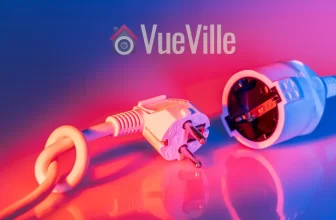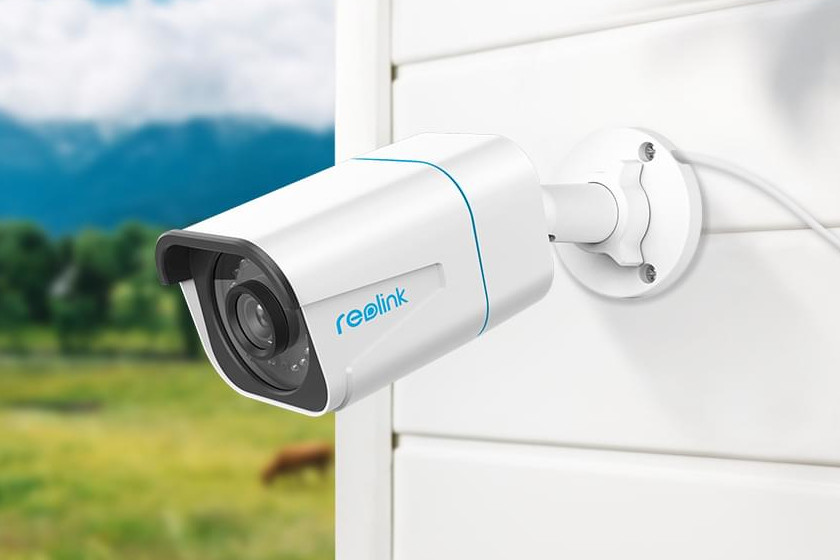I have been building and enjoying my DIY smart home for over 8 years now, with smart CCTV and smart home automation.
Back when I started, almost all IP cameras worked perfectly without any connection to the Internet. They also had local storage for recording video clips.
The only reason for the camera to connect to the manufacturer’s servers was if the customer activated the P2P option.
This made sense – the best way to let customers access their IP cameras remotely was using P2P servers. Port forwarding is not user-friendly, especially for those who are less tech-savvy. This also enabled easy push notifications.
Then security camera makers hit upon a great plan to boost their profits – make their products reliant on their ‘cloud’.
Hmm, how did they do this?

Simple, take a perfectly fine IP camera and cripple it. First, make it so that you cannot set it up without an Internet connection. Also make it require an active Internet connection for the camera to work and record clips to the local SD card.
Why stop there, right? Human greed knows no bounds. Just get rid of the local storage and offer a free cloud recording plan which allows you to see clips from the past few days.
And so today we have reached a state where your mainstream security cameras like Nest, Ring, Wyze, Arlo are all dependent on the Internet and sometimes even the manufacturer’s cloud servers to function.
Some go even so far as to make you pay a monthly fee for things that used to be free a few years ago – like the ability to store data locally, create motion detection zones, advance motion detection, and even smart home integration (like with Alexa, Google Home, Apple kit etc.).
The crafty strategy that businesses have devised is this : gain market share by hyping up cheap under-powered hardware with attractive features at very low prices, force customers to pay a monthly fee to use said advertised features, lock customers into the manufacturer’s walled-garden product eco-system, and profit.
I have steadfastly avoided getting sucked into this mess of hardware that is useless without an Internet connection. I have done this by hosting my own smart home, instead of outsourcing my data and privacy to some ‘cloud’ servers that sit who knows where.
[text-blocks id=”5527″]
1. Protect your family
Here’s an unpopular opinion: the only thing a security camera should need to work is power. Not a ‘cloud recording plan’, and not even an active Internet connection.
A security camera has a critical job – no matter what happens, keep recording. It is as simple as that. If you have set up motion detection, then record when motion is detected.
Your outdoor smart lights have a simple job – when motion is detected, light up.
None of the above should require an Internet connection.
An example: The uber popular cheap Wyze cam cannot do motion detection unless it is ‘online’, in other words it needs an active connection to Wyze cloud servers.
Your smart home hub has a simple job – if an alarm is triggered, let you know through push notifications or an email. This should not be conditional on a 3rd party cloud server halfway across the world.

If your smart home cannot function independently, then its not fit for purpose.
This is the main reason I did not opt for Samsung SmartThings back then because it didn’t have local processing. This led to various issues such as smart lights that turn on by themselves, service outages, and even people getting locked out of their homes because Samsung’s cloud servers failed.
With the v2 Hub released in 2018, Samsung got better at local processing because it was obvious even to them that a cloud-reliant smart home is useless.
Unfortunately, it has since emerged that even the new hub is reliant on Samsung’s cloud servers staying online for the most part. Something they regularly fail to do.
2. Protect your privacy
When you place your data on the cloud, it is shipped electronically to data centers around the world. The cloud is just a layman’s term for the massive data centers that most tech companies use to store user data.
You probably haven’t realized that you have outsourced the responsibility of protecting your data to multiple companies you don’t even know. Some of these data centers may be in countries where there are very poor privacy protections laws.
And we all know how good tech companies are at protecting our data: The infamous Apple iCloud hack where celebrities found their secrets made public, and now the revelation that Apple secretly dropped end-to-end encryption on their iCloud 2 years ago under pressure from the FBI.
Now when it comes to your smart home and security cameras, things can become very sinister.
Here’s a list of recent hacks and privacy issues that have plagued the most popular cloud-based smart home hubs:
- Samsung SmartThings owners found their smart homes could easily be hacked and doors unlocked remotely.
- Amazon Alexa and Google Home smart speaker eavesdropping attacks found again and again.
- An 8-year old child was verbally abused by a hacker who hacked the nursery Ring security camera. Over 3000 others were hacked.
- Fibaro Home Center Smart Hub allowed anyone to upload and download the smart hub’s backup data to and from the cloud server.
- Samsung, LG Smart TVs and Apple, Fire, Roku TV sticks were caught sending private sensitive user data to Google, Facebook and Netflix.
- FurryTail pet feeders were hacked by a security researcher to overfeed pets.
- …… and on and on.
Please do not buy cloud-reliant gear. Buy smart home devices that do not require to be connected to the Internet at all.
3. Save money
The biggest issue with Internet and cloud-reliant smart home gear is that to make full use of the hardware, you often need to pay a monthly fee.
The hall of shame:
- Nest cameras cannot record video clips unless you pay for Nest Aware service
- Ring doorbells will not let you review missed visitors’ videos without Ring Video Recording
- Simplisafe charges you if you want push notifications, camera recording, or even the ability to remotely arm/disarm your smart home
What do you do when your cloud-reliant smart home hub manufacturer goes bust? Ask Revolv (now Google Nest) or even Wink customers.
Any smart home gear that is reliant on a cloud service leaves you to the whims and fancies of the manufacturer.
Buy only smart home hear that is not reliant on a cloud service.
4. Defeat planned obsolescence
The Sonos fiasco is the best example of unbridled corporate greed taking advantage of gullible customers. There used to be a time when high-end audio equipment would last a generation, if not more.
A few days ago, Sonos in its infinite wisdom decided that you shall not use a product of theirs if its more than a few years old. Some of the affected products are hardly 5 years old. It’s also worth noting that the whole USP of Sonos speakers is the ease of use and reliability.
To rub it in, not only will they not provide software updates for the ‘obsolete’ speaker, but all your other newer Sonos speakers would also be blacklisted and stop receiving security updates.
Yes, how dare you buy a brand new Sonos speaker and use it alongside a previous generation Sonos speaker at the same time! Dump that old speaker pronto. Who cares if its still perfectly functional? The environment? Bah! Nothing can stand in the way of profits and that all important share price!
The naked greed of Sonos was exposed when they made this announcement.
After severe backlash from existing customers, they walked it back a bit. Now they say your ‘legacy’ hardware will have to be spun off to a different network.
The irony here is that the whole reason people got Sonos gear was to build whole-house audio. It just doesn’t make sense to have different audio networks in the same house which don’t work with each other!
Before Sonos apologists come at me with their pitchforks, let me say that most tech companies behave this way.
The only reason Sonos are trying on this nonsense is because they are planning obsolescence into their products.
Also I am reminded of Apple deliberately slowing down old phones so that customers would upgrade to newer models. So shady.
I am sure we will soon hear of such cases with security cameras as well – if your security camera is cloud-reliant, you are at the mercy of the manufacturer. They can turn your camera into a brick whenever they please.
Don’t buy cloud-reliant or Internet-reliant cameras. Would you buy a TV that wouldn’t work without a cloud server? How much more important then is something that protects your family?
5. Create your own customized smart home
If you pick a DIY smart home hub like the HomeAssistant like I did, you get a lot of flexibility.
You can keep things super-simple or opt for features like powerful integration with your home security system. It’s up to you!
To learn more about the best way to get started with a DIY Smart home, have a look at my easy-to-follow guide to smart homes.
If you would like some inspiration, check out my own DIY smart home build.






You’ve just perfectly described how Apple’s business model works. I’ve been a developer for 15 years and I know how it works and this is exactly it. I just sum it up as a monopoly (or North Korea, lol), but your explanation is clearer. They force dependence through peripherals and ports and an ecosystem that relies on Apple to use anything. Even the third party apps must follow strict rules to go to the appstore, which is why there are far fewer apps than for Android. You can’t have an apple watch without an apple phone, specifically (forget iPad). They make that one thing have desirable features that nobody has, so you’re forced to buy into their ecosystem (for thousands of dollars) and before you know it, you’re sort of trapped by the sunk cost effect unless you’re tech savvy.